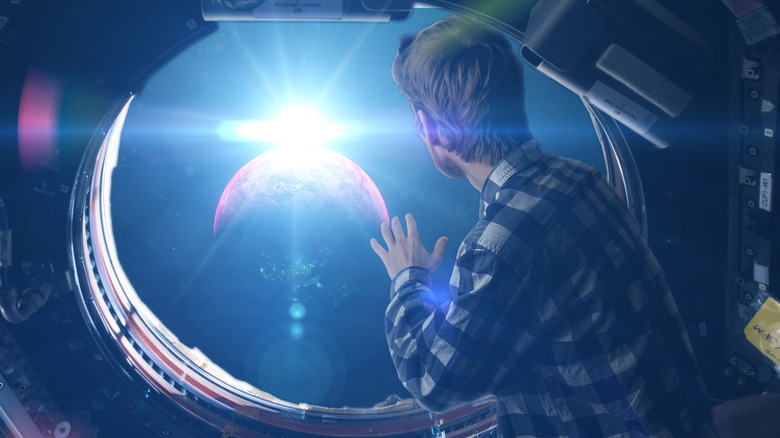The Next Generation Of Space Suits Won't Just Be For Astronauts
While the International Space Station (ISS) has been continuously occupied since 2000, one of its most vital life support systems was designed in 1978. Comprising 14 layers and 18,000 parts, this critical system is way past its planned 15-year service life. We're talking, of course, about NASA's extravehicular mobility units (EMU), which is government-speak for a spacesuit.
According to a 2021 report from the Office of Inspector General, the primary life-support systems (PLSS) of the EMUs are the most complicated — not to mention expensive — part of NASA's spacesuits. As the name suggests, these units keep astronauts alive inside the suit by controlling things like oxygen and CO2 levels, power, and temperature. Of the 18 PLSS units manufactured, only 11 remain today, with only four on board the ISS at any given time while the others undergo maintenance, costing $150 million annually.
It's no surprise that NASA is in the market for a wardrobe makeover. In 2022, NASA selected Axiom Space and Collins Aerospace (a subsidiary of Raytheon Technologies) to develop and supply the next generation of spacesuits for the Artemis missions to the Moon's surface and spacewalks outside the ISS, respectively. But in the new environment of commercialized space flight, these companies are thinking beyond NASA regarding their spacesuits' capabilities. They're thinking about you.
Suiting up for out-of-this-world vacations
Dennis Tito became the first space tourist in 2001 when he spent six days visiting the ISS. Twenty years later, Virgin Galactic and Blue Origin successfully landed their first civilian suborbital flights, while SpaceX launched its first civilian orbital mission. According to investment bank UBS, space tourism could be a multi-billion dollar industry by the decade's end.
In an interview with CNBC, Collins Aerospace's Dave Romero said there's interest in their spacesuits from countries that have not yet been to space and that future spacesuit operators will be more interested in "experiential activities." In other words, people who will throw down enough cash to break the bonds of Earth aren't just going to want to look out a window, they're going to want to go outside. Indeed, Collins Aerospace's marketing material asserts that their spacesuits enable "humankind to live, work, and play in space."
Axiom Space, for its part, has already started construction on the first commercial space station. It offers packages to private individuals, including a 17-week training course and a flight to the ISS.
Of course, the sky's the limit when it comes to the future of spacesuits, such as those that humans might one day wear on Mars. They'll need to fit many different body types, be accessible to those with disabilities, and be easily repaired or replaced — possibly with 3D-printed parts. The next small step in the evolution of spacesuits is upon us, which might become a giant leap.

